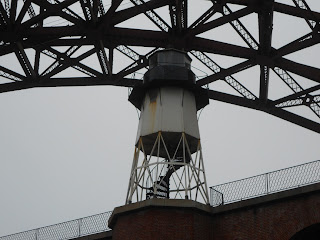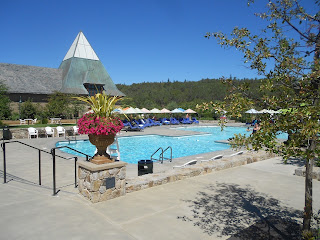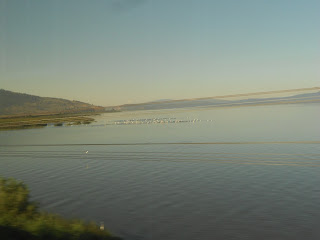 |
| Columbia River view from Scenic Highway |
As scenic highways and byways go, the Columbia River Scenic Highway is one the best in the United States. If you have the opportunity to travel to Oregon on your next western road trip, this is a trip you want to experience.
The Columbia River Gorge is a truly unique region in the Pacific Northwest. This is an area of high cliffs, cascading waterfalls and thick pine forests all intermixed with the colorful history of the famous Lewis and Clark Expedition. The scenic Columbia is the Mississippi of the west coast. It is the largest U.S. river emptying into the Pacific Ocean.
The Roadway of the Immigrants
The Columbia River made up one of the most important segments of the old Oregon Trail. This is the river that immigrants took their chances rafting down to what would become their new homes. In fact, before the Barlow Road opened up in 1846 around the south side of Mount Hood, the perilous and scenic Columbia was The road from The Dalles to present day Portland at the mouth of the Willamette River.
This was not an easy trip. Lives were lost making the journey west of The Dalles. Most immigrants were not naturally skilled rafters and what the Columbia River could throw at them would tax their skills to the max.The destination for most of the immigrants was Oregon City along the Willamette River just a few miles south of Portland.
Two additional Western Trips articles with photos you'll find interesting are Historic Oregon City and Astoria Oregon at the mouth of the Columbia River.
 |
| Benson Bridge at Multnomah Falls |
The Columbia River Highway was built between the years of 1913 to 1922. This scenic Oregon highway spans some seventy-five miles along the south shore of the Columbia River from Troutdale, just east of Portland, to The Dalles. The highway was constructed during the years that automobiles slowly but surely made their way into mainstream America. Upon it's completion, the Columbia River Scenic Highway, a masterpiece of engineering, opened up an entirely new destination for America's motorists.
The Waterfalls of the Columbia Gorge
As you drive eastward on the Columbia River Highway from Troutdale, you'll enter a section of some of the most beautiful waterfalls found anywhere in America. The Columbia Gorge waterfalls are spectacular and these are must stops on your drive.
 |
| Multnomah Lodge |
Wahkeena Falls
Another beautiful and easily visited waterfall along the Columbia Scenic Highway is the 242 foot high Wahkeena Falls. Prior to 1915 and the building of the Columbia Highway, the falls were named Gordon Falls. Wahkeena Falls is located about one-half mile west of Multnomah falls. The base of the falls lie about 100 feet above the highway. The falls crash step by step down a narrow crack between basalt rock outcroppings. Many refer to this type of waterfall as a "tiered falls".
 |
| Wahkeena Falls |
Wahkeena Falls Picnic Area is found at the base of the falls and features a picnic shelter with a stone fireplace.
Horsetail Falls
Horsetail Falls is a spectacular site that drops 175 feet down a mossy rock wall. Out of all the beautiful Columbia Gorge waterfalls, Horsetail Falls is the closest to the Columbia River Highway. It originates from the Horsetail Creek. The falls received it's name due to the fact that the water that goes over the rounded rock face resemble a horses tail. The falls has an elevation above the highway of about fifty feet.
 |
| Horsetail Falls emptying into a pond |
The attractions shown in this article are only a small sample of what can be seen and enjoyed along the historic Columbia River Scenic Highway. The Columbia Gorge region between Troutdale and The Dalles is one of the most beautiful areas in the Pacific Northwest and is an excellent addition to any Oregon trip planner.
An excellent book on the subject of the Columbia Gorge is Bridge of the gods, mountains of fire : a return to the Columbia Gorge by author Chuck Williams. Another is Hiking the Columbia River Gorge by author Russ Schneider.
(Photos from author's private collection)






































